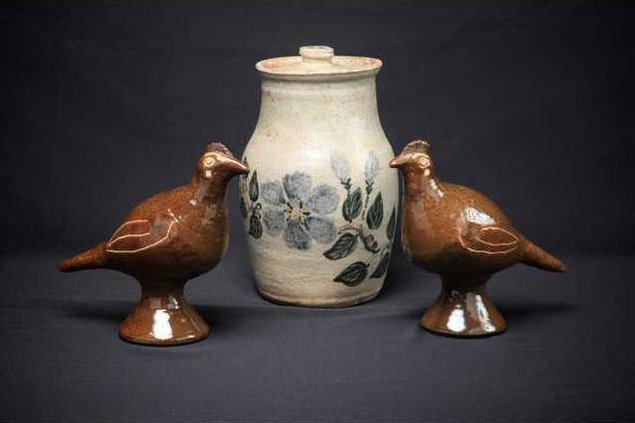Arie Meaders folk pottery exhibit
When: Through Aug. 2011
Where: Folk Pottery Museum of Northeast Georgia, Sautee Nacoochee Center, 283 Ga. 255 N., Sautee How much: $5 adults, $4 seniors, $2 children More info: 706-878-3300
An exhibit on view now through August 2011 at the Folk Pottery Museum of Northeast Georgia in Sautee focuses on Arie Meaders, the mother of famed folk potter Lanier Meaders.
Chris Brooks, director of the museum, said Arie Meaders was instrumental in attracting tourists to the potteries of Northeast Georgia.
"When the utilitarian market was declining up here, she really created some new designs that attracted tourists to the pottery," he said.
As Meaders' husband, Cheever Meaders, son of Meaders Pottery founder John Milton Meaders, began to tire of making utilitarian wares in his pottery shop, Arie decided to take a turn at the wheel.
"Cheever had stubbornly hung on to making utilitarian pieces- churns and jars and kraut jars and those kinds of things- even into the 1950s," Brooks said. "And he finally got to the point when he was just
ready to leave the shop, so Arie went out there and began to make these decorated pieces, and he was encouraged by her success, so he came back into the shop and worked until 1967 with her."
Brooks said the exhibit includes more than 15 pieces created by Meaders, some in collaboration with Cheever, on loan from the collection of Robert Coston.
Included in the body of work is a pair of quail.
"She is very famous for her bird forms, and the quail are particularly sought after by collectors," Brooks said.
Pots decorated with flowers and leaves, rooster bowls and several lidded items, like canisters and bean pots, also are included in the exhibit.
Brooks said Meaders influenced her children, but her techniques also continue to be emulated by other folk potters that are working today.
She is also noted for designing her work before making it, which sets her apart from other folk potters of the time.
"She made drawings of what she would like to make, so she was different from most folk potters, in that she was sort of thinking ahead what she would like to make and drawing it out," Brooks said. "And a lot of times, before she learned to turn, she would get Cheever to make those things that she had drawn."
The exhibit coincides with the museum's fourth anniversary, and plans for a reception are to be announced soon.

